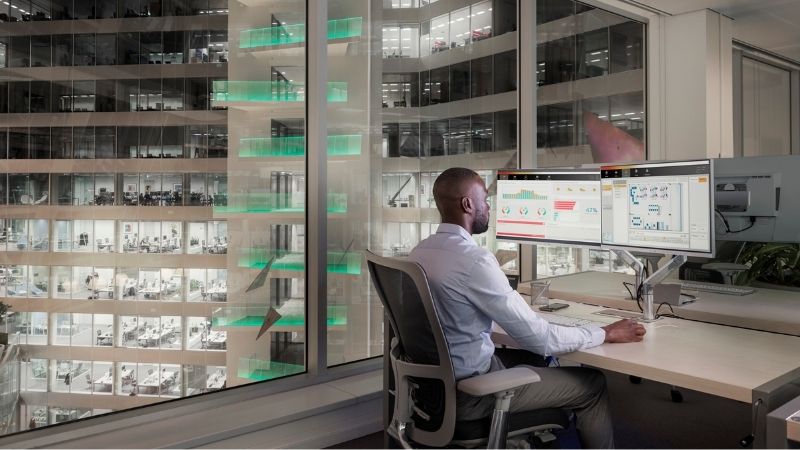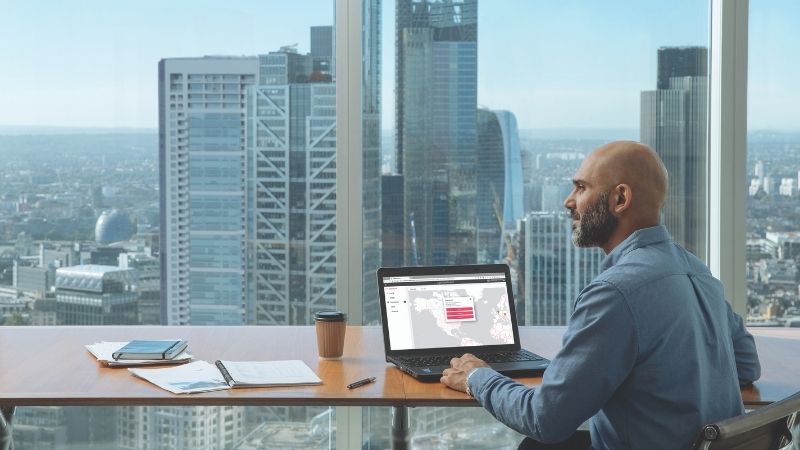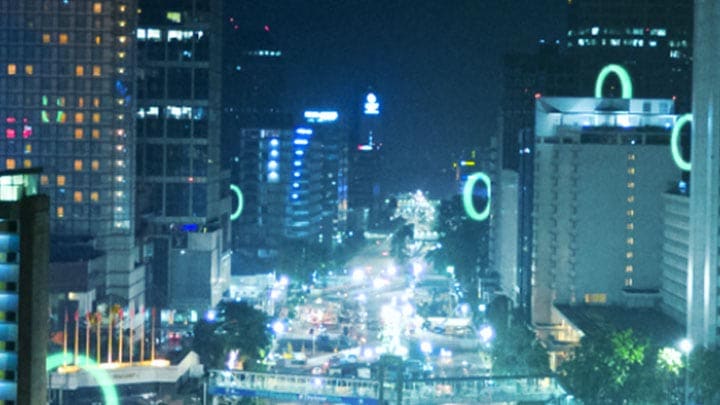February 2, 2021
The Internet of Things (IoT) can help create safer workspaces, and connected lighting systems are uniquely well-placed to form the basis of an IoT infrastructure
As the world starts to emerge from the COVID-19 pandemic, building owners, building managers, and office managers all have the urgent task of ensuring that workplaces offer employees a safety net from the virus. It's not only important to make workspaces safe, but also to make people feel safe.
In other words, people returning to the workplace need to feel comfortable about all aspects of the building, so it's useful to give them control over some areas that could raise concerns and which they couldn't affect before the pandemic.
For example, employees may want to avoid touching surfaces like door locks, elevator controls or light switches; sidestep crowded areas to get to their desk; and find an available hot desk without having to walk through occupied parts of the office.
Looking beyond the needs of individual employees, many building owners and office managers will be reassessing how their space is used and whether it's laid out in the most appropriate way, given the changes in office usage brought on by the pandemic and the likelihood of more social distancing measures. With uncertainty over future rules and regulations, building managers have become much more aware of the need for remote monitoring and predictive maintenance for building systems.
All these concerns point toward increased adoption of smart building systems. We hear from some suppliers, especially mobile network operators, that the smart buildings segment now accounts for as much as 80% of demand for their Internet of Things (IoT) solutions. But the various needs of users can quickly make it hard to work out the necessary mix of systems.

Other systems serve different aims and user groups. Systems to monitor footfall, desk usage and space management tend to be in place for a short while as part of a study and are then removed.
Indoor location systems can track movement of people and assets around a space. Keyless access systems allow entry without touching keypads or locks. Camera-based systems can monitor public areas to identify people with a high temperature, or those assembling in groups and not complying with social distancing rules. And smart lighting systems provide apps for users, as well as data for building and office managers.
Navigating through this mix is a challenging task for staff, who normally haven't been trained on the technologies and struggle to work out how the different systems could link together to provide the necessary information in the right form to the right people.
With these issues in mind, it's very interesting to see the rise of a relatively new set of capabilities in the smart buildings area, namely smart LED lighting that serves as an infrastructure for several types of IoT sensors that can collect data from the environment they’re in.
Upgrading an office with smart lighting involves LED luminaires connected by Power over Ethernet or wirelessly, software-based control, and a platform for storing and analyzing collected data. It enables many new data-enabled services.
Crucially, the business case for other IoT applications improves dramatically if they can run on the same network. This is because it's easier to install sensors for other uses on a lighting network than to install a separate system for them with its own cabling.
Signify's Interact Office is an interesting example of using connected lighting as infrastructure. It adds a sensor unit into luminaires to monitor temperature, humidity, light levels and noise levels, as well as to track occupancy and numbers of people. It also provides a Bluetooth Low Energy beacon. The data generated is collected in the Interact Office platform, which offers:
One of the benefits of using lighting as an infrastructure for sensor networks is that all workplaces already have lighting installed. This makes it relatively easy to upgrade the system, with the main tasks being to change the luminaires and to run an Ethernet cable to them or enable a wireless connection to them. The cabling is typically easier with lighting than for devices that need to be installed separately.
Another important advantage is that office tenants could set up smart lighting themselves, without having to wait for the building manager or landlord to complete an upgrade for the whole building. Additionally, most types of workplace can potentially be addressed, including offices, factories, warehouses, retail outlets, schools, farm buildings, casinos, museums and more.
A final important factor is that there are now many commercial spaces available to let, as companies rethink their use of offices considering COVID19. So, owners and building managers need to set their property apart to make it more attractive to rent. Smart building features will be an important part of that.

Smart LED lighting has huge potential as an infrastructure for all kinds of IoT sensors in offices and other workplaces. A connected lighting system can serve the owners and managers of the building, as well as the tenants and employees.
Some of the main applications hold the promise of a safe return to work post-pandemic; some help to boost resilience for dealing with possible disease outbreaks in the future; and others are about managing buildings in a more efficient and sustainable way.
Thanks to their ubiquity and easy access, lighting systems are uniquely well-placed for this role in an IoT infrastructure. Connected lighting should be firmly on the list as a candidate in any smart building upgrade project as the world tries to return to normal ways of working.
Signify (Euronext: LIGHT) is the world leader in lighting for professionals, consumers and the Internet of Things. Our Philips products, Interact systems and data-enabled services, deliver business value and transform life in homes, buildings and public spaces. In 2023, we had sales of EUR 6.7 billion, approximately 32,000 employees and a presence in over 70 countries. We unlock the extraordinary potential of light for brighter lives and a better world. We have been in the Dow Jones Sustainability World Index since our IPO for seven consecutive years and have achieved the EcoVadis Platinum rating for four consecutive years, placing Signify in the top one percent of companies assessed. News from Signify can be found in the Newsroom, on X, LinkedIn and Instagram. Information for investors is located on the Investor Relations page.


December 17, 2024
Transforming Dubai’s iconic buildings with connected lighting from Signify